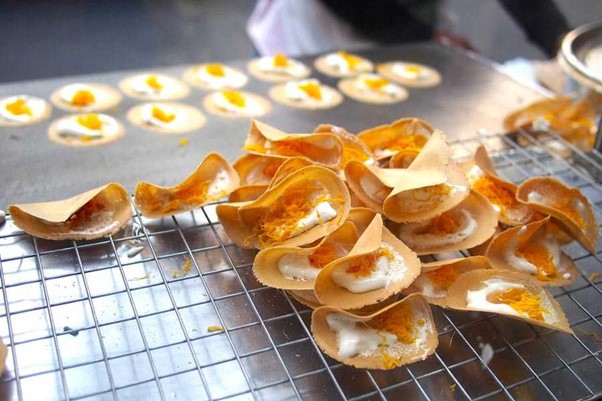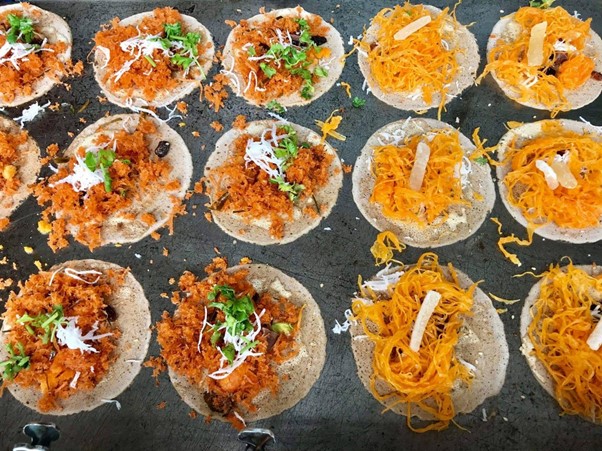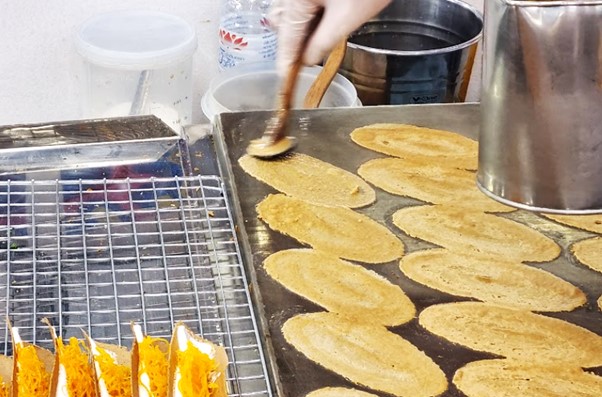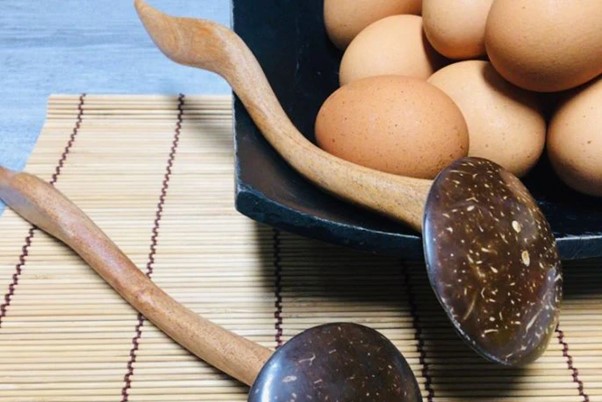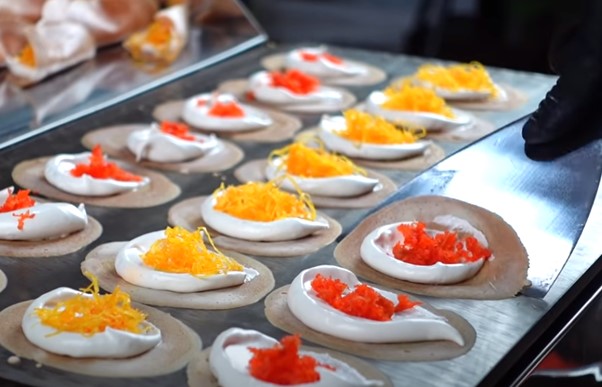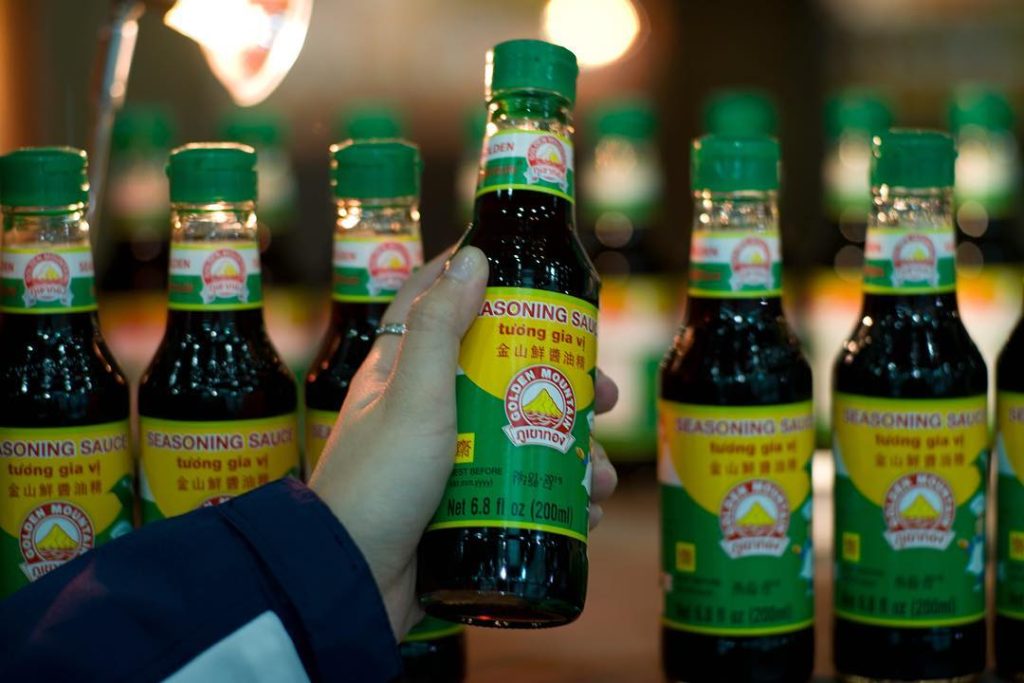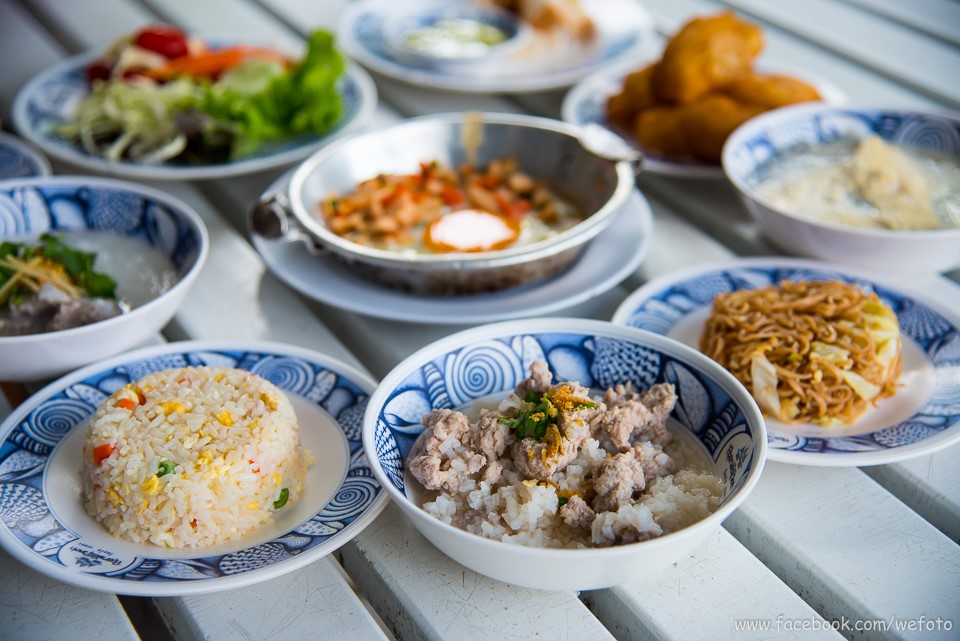Slightly crispy, sweet and savoury – there is a delicious Thai street snack that I feel most people miss out on when they visit Thailand. With so many mouth watering options on the streets and only one stomach, it is understandable that Kanom Bueng gets shadowed by more popular items such as mango sticky rice or banana roti. Each time I’ve shared this taco-shaped snack with foreign friends or visitors, they go, “Wow! What is it?” and chew on with amazement and curiosity.
Freshly made Kanom Bueng at a streetside stall (Image source | HHWT)
Kanom Bueng or what many refer to as Thai crispy pancakes are one of my favourite street snacks (the other being Kanom Krok). You can easily pop them into your mouth without dirtying your hands and switch between the sweet and salty fillings. They are so fun to snack on while walking around and can be found at most markets! These are usually sold in bags with a set amount of 10 – 50 Baht. You can also choose whether you want only sweet or salty fillings or a mix of both.
Despite its popularity on today’s streets, this traditional snack has origins in the palace in the Central regions from hundreds of years ago. It is believed that the snack was inspired by a dish in India that was made on terracotta tiles, hence the name Kanom Bueng which literally translates to snack tile (the word for tile in Thai is krabueng). There seems to also be evidence of this snack on temple wall paintings from the Sukhothai period (1238 – 1438) and in more recent literature named Khun Chang Khun Paen from the Ayutthaya period (1351 – 1767). Although Kanom Bueng has a long history, it was not officially listed in the Cultural Heritage of Thailand until 2013.
A more traditional style of Kanom Bueng (Image source | Rosalyn)
Since this snack started off amongst the royals in palaces, ingredients used traditionally differ slightly to what is commonly found on the streets today. For the savoury filling, big river prawns were minced and cooked with pepper, coriander root, prawn fat (giving it the orangey colour), kaffir lime leaves and desiccated coconut. The sweet filling featured diced candied pumpkins, foi thong (golden egg yolk threads) and dried persimmon. There were also rumours of a palace that created a savoury filling that included minced pork instead of prawns and added chillies to the mix.
Nowadays recipes have evolved and adapted to be accessible to people of all classes. The main fillings you will find are salty and sweet – the salty usually orange with seasoned desiccated coconut, and the sweet yellow from the foi thong.
How it’s made
Using a specialised tool called kraja, the batter is picked up by the flat head of the tool and applied thinly onto a heated flat pan. Street vendors will do this so quickly that you’ll think it’s an easy task, but trust me it’s not! The batter is made by mixing rice flour, mung bean flour, plain flour, lime water, egg yolks and palm sugar together.
A more traditional style of kraja made with wood and coconut shells. Most vendors now use a stainless steel version. (Image source | Sor Dao Tieam)
Once the batter is cooked, the cream that is made by whipping egg whites and palm sugar together is applied on top with a kraja. The toppings, usually foi thong for the sweet and desiccated coconut cooked with garlic, coriander root, pepper, kaffir lime leaves, orange food colouring and seasoning are placed on top. Sometimes mini dried shrimps are also included. Each piece is then removed with a spatula and folded in half before being placed on the cooling rack to crisp up.
Kanom Bueng being removed from the pan and nearly ready to munch on! (Image source | Chef Kwan EngiChef)
Many versions of Kanom Bueng now exist as vendors get creative with their fillings and adaptations. Some sell giant pieces filled to the brim with different toppings and others bring back the classic royal style to the streets. Don’t miss out on giving these a try when you see them, and let us know if you’re team sweet or salty filling!
Article By Oun V.
References


